5 Tips For Tailbone Pain Postpartum
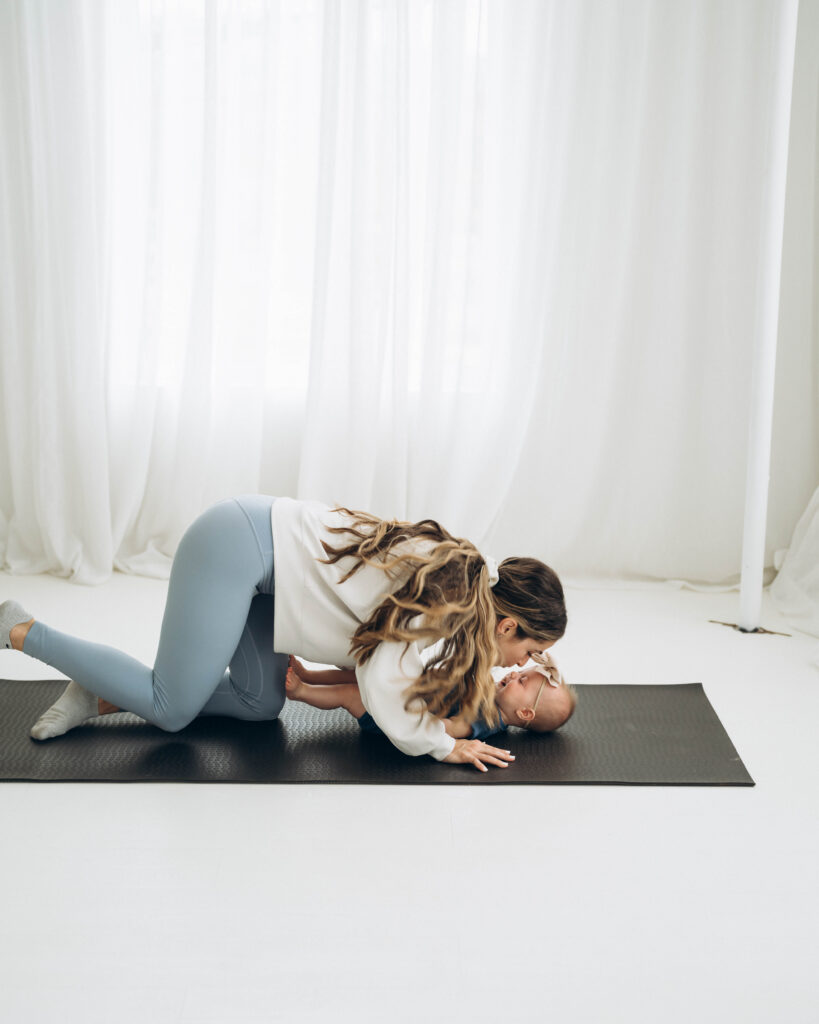
Disclosure: I only recommend products I would use myself and all opinions expressed here are our own. This post may contain affiliate links that at no additional cost to you, I may earn a small commission.
Have you ever walked away from a doctor’s appointment feeling frustrated because you were told, “That pain is normal — it’ll go away after you give birth or after you recover from labor and delivery!” Here’s the thing: many pregnancy and postpartum pains are common, but that doesn’t make them normal.
As a physical therapist who specializes in pelvic floor health, I cringe every time I hear a new patient share that a professional told them the only remedy to their pain is time. First of all, time does not cure dysfunction. In fact, it can exacerbate the problem! Secondly, there are lots of helpful steps women can take to relieve pregnancy and postpartum pain. Strengthening and mobility exercises are excellent tools for those literal pains in the butt.
What causes postpartum tailbone pain?
The scientific term for tailbone pain is coccydynia, which literally translates to pain in the coccyx. Coccydynia is one of several pelvic girdle pains that tend to pop up during pregnancy and postpartum. Your pelvic girdle includes your SI joints, symphysis pubis, and your coccyx. Your SI joint connects your tailbone to your two hip bones, and pain in this area is incredibly common. (In fact, I wrote an entire post about SI joint pain and how to get some relief!) Meanwhile, symphysis pubis dysfunction (SPD) affects 1 in 3 women during pregnancy. The great news: all three of these conditions are definitely treatable!
There are several causes of coccydynia:
- Trauma (like from a fall)
- Joint disease or degeneration
- Nerve pain or damage
- Muscle spasms in your pelvic floor
- Vaginal delivery during childbirth
Of course, this post is focused on the last cause of tailbone pain — childbirth. However, if one of the previous causes may be the culprit for you, talk to your doctor or physical therapist to find the right treatment for you.
Depending on the circumstances surrounding your delivery (long labor times and medical interventions can increase the likelihood of coccydynia), you might experience postpartum tailbone pain differently. Some women feel a sharp pain when they sit down or stand up, while others develop an achy pain after sitting for long periods of time.
Postpartum coccydynia is not a one-size-fits-all diagnosis. Some women fracture their tailbone during childbirth, while others experience misalignment or dislocation. Tailbone pain also occurs because of pelvic floor dysfunction rather than an injury to the coccyx itself. A medical provider or pelvic floor PT can help you determine the exact reason for your discomfort, but regardless of the cause, there are several steps you can take to give yourself some relief.
5 ways to relieve tailbone pain
1. Release your pelvic floor
Many of the muscles and ligaments in your pelvic floor attach to your tailbone. When those muscles and ligaments get too tight, they can pull your tailbone in one direction or the other or cause it to “tuck in”. All of these things cause misalignment in your pelvis, which can be really painful — especially during sitting, sex, and bowel movements. To release your pelvic floor, incorporate breathwork, stretching, and self-mobilization into your at-home routine.
- Breathwork: Try rockback breathing! This is a personal favorite of mine, and I recommend it to countless clients. As you get into this rounded thoracic spine posture, it is easier to inhale and direct the air down and back towards your lower back and butt, which can target the pelvic floor to help it relax.
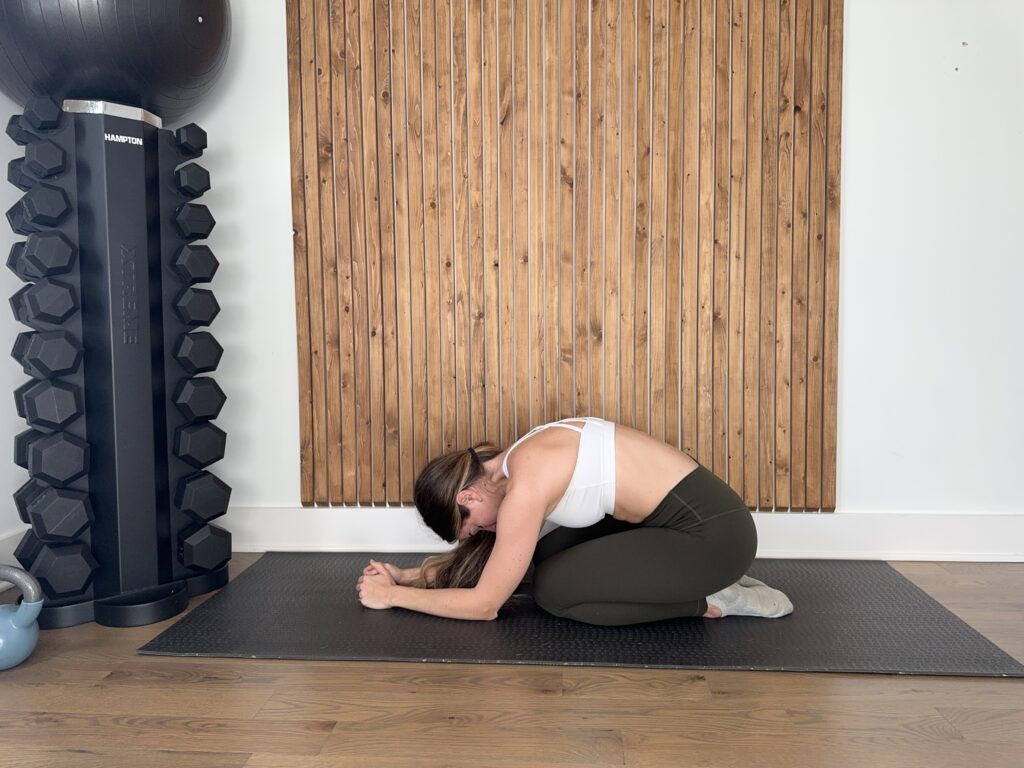
- Stretching: Lots of pelvic floor PTs love to stretch the pelvic floor through the “happy baby” pose, but this can be hard to get into when you’re still recovering from childbirth. If you need a modification, a one-sided happy baby can be much more relaxing — and just as effective! Just remember to stretch both sides to keep things balanced and aligned.
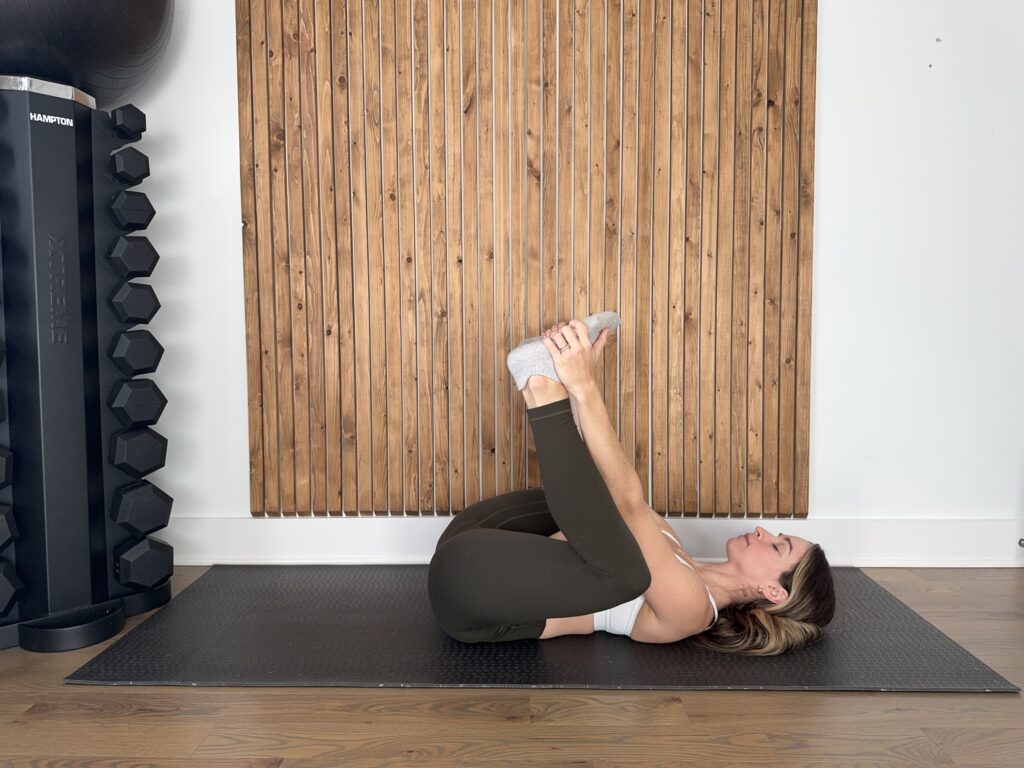
- Self-mobilization: For this exercise, grab a lacrosse ball and sit down on it, inhaling down into your butt hole. You’ll feel it lengthen as you inhale. Then, exhale and simply blow out the air.
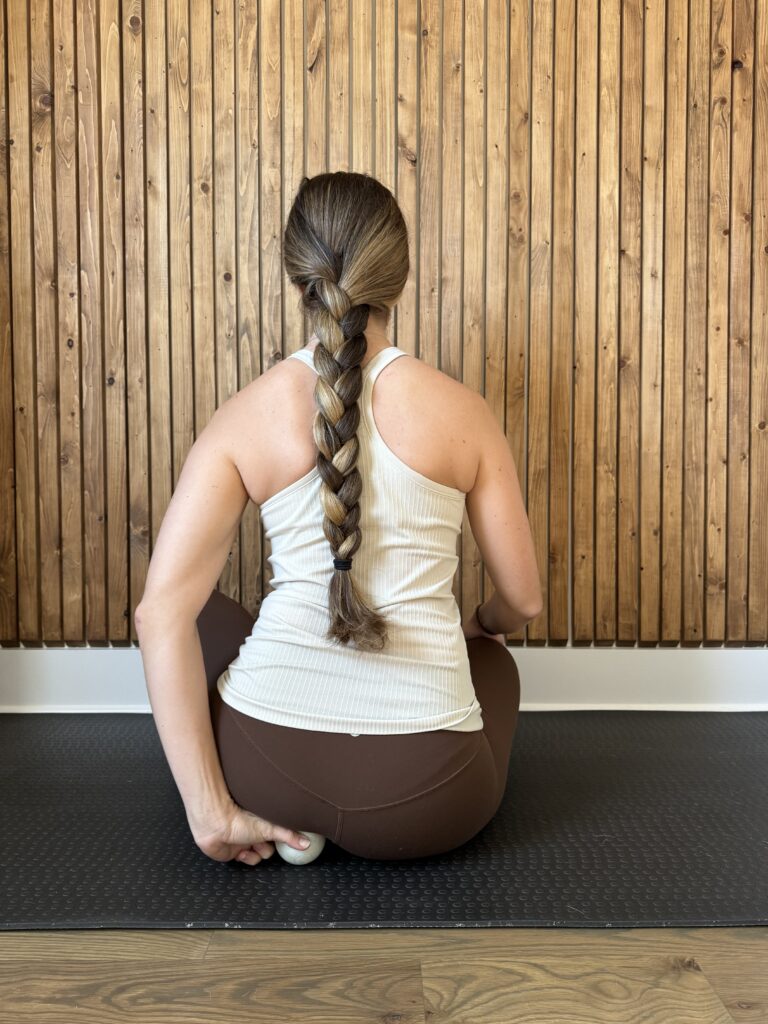
2. Stop clenching your butt
You may not realize it, but you’re probably clenching your butt all the time! This is true for most people, but new moms are especially prone to this, since they’re trying to get some pelvic relief. However, this move hurts a lot more than it helps. Be mindful of the butt clench when you:
- Stand at the sink doing dishes
- Carry your baby
- Have a conversation with someone while standing
- Kneel over the bathtub to bathe your little one
Why is this common posture a problem? When you clench your butt cheeks, you inevitably tuck your pelvic under you. This contributes to a tight posterior pelvic floor, which is a main culprit of tailbone pain. The solution for this one is simple: relax! Anytime you notice yourself clenching, relax those muscles and breathe deeply. Retrain your body to hold itself in a neutral position.
3. Address your sitting posture
This one’s not just for new moms! With so many of us working from home now, it is easy to fall into a slouched posture while you sit from the comfort of your home office or lounge on the sofa. This slouched posture reinforces that tucked tailbone position, placing direct pressure on your tailbone and causing pain over time. This is even more important as you recover from childbirth!
To avoid slouching, prop yourself up with a pillow behind your back to maintain an upright posture. If you’re already experiencing tailbone pain, you might even consider slightly leaning forward to move pressure away from your tailbone. If you need extra pressure relief, try sitting on a cushion. I love this one and use it in my own house!
4. Unlock your thoracic spine and rib mobility
What? Rib movement to help your tailbone? This might not seem like an obvious solution, but in the PT world, we’re trained to look above and below the area of discomfort to see if an adjacent area might be causing or contributing to the pain.
A rounded upper back can contribute to an overall rounded posture — and therefore, a posterior tilt of your pelvis — which can contribute to tailbone pain, especially if you sit in this rounded posture regularly. Working on thoracic extension and rotation can help you improve your posture and your pelvis position, taking the pressure off of your tailbone!
Here’s an example of a favorite thoracic mobility drill of mine – the windmill.
5. Lengthen your glutes
When your glutes are tight or spasming, they pull on your tailbone with some significant force (they’re strong muscles!), which causes pain. Your glutes might be tight for a wide variety of reasons, from overworking them to clenching too much. You might also have difficulty hinging backwards, which helps to lengthen them.
While it’s impossible to know through a computer screen what would work best for your specific situation, I’d generally recommend taking a few days off from glute work in your workouts. Then, start fresh. First, mobilize your glutes with an exercise like a glute rock back. Then, strengthen them in a lengthened position like a reverse lunge, making sure to hinge your trunk forward and sit your butt back to really lengthen your glutes during the movement.
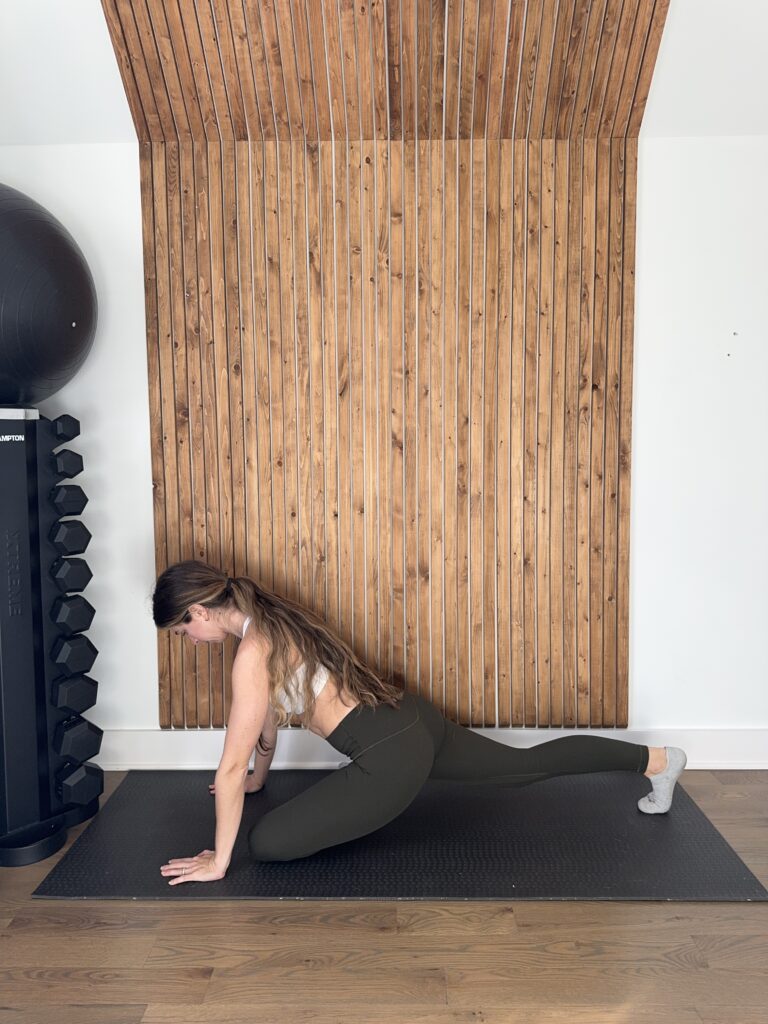
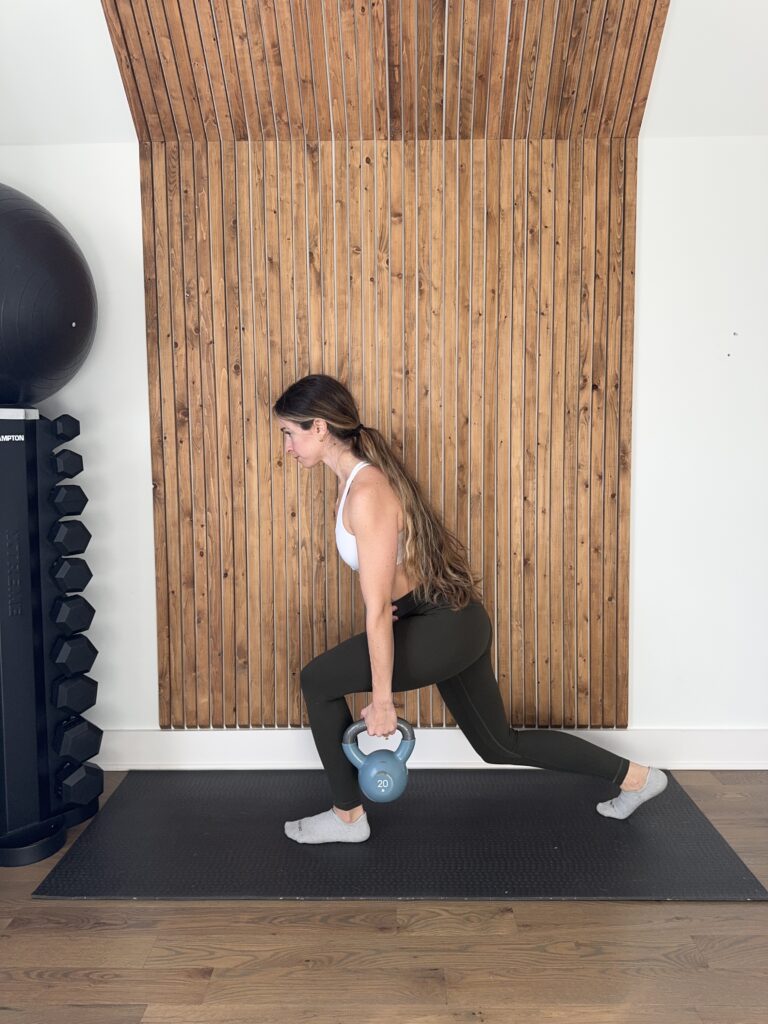
Recovering well through postpartum
Tailbone pain is just one possibility during postpartum recovery. No matter what kind of discomfort you’re experiencing, I always recommend an in-person evaluation from a pelvic floor physical therapist. They’ll be able to tailor their recommendations to your individual needs and symptoms!
If you want to recover well through the early days of postpartum, I created a resource just for you. My course, Movement through Early Postpartum, was designed for new moms recovering from both vaginal and cesarean deliveries. Each module was created by me to help you restore your core and pelvic floor muscles, reduce potential discomforts and pains, and reclaim control of your body after birth and beyond. In it, you’ll find educational videos and safe, effective movements to help you through the first 12 weeks of motherhood. (Spoiler alert: the MTEP program is still effective for all moms who want to rehab and heal, no matter how long it’s been since you gave birth!)
The early postpartum days are full of changes and surprises, but I know you can navigate through each one. I hope this post provides you with some much-needed relief! Head to the Movement through Early Postpartum to find so many more helpful movements to help your body thrive in motherhood.
Great Post!
Are these exercises safe to do during pregnancy?
I’m currently in the second trimester, and thinking of trying to avoid the horrible coccyx postpartum pain I suffered after my first child. It took over 4 months to get better, having pain standing, walking, carrying weight… Once that pain got better, I started noticing that during my period I have vulvar discomfort when I’m standing.
Is that also related? How can I prepare best for postpartum?
Thanks for your amazing tips!